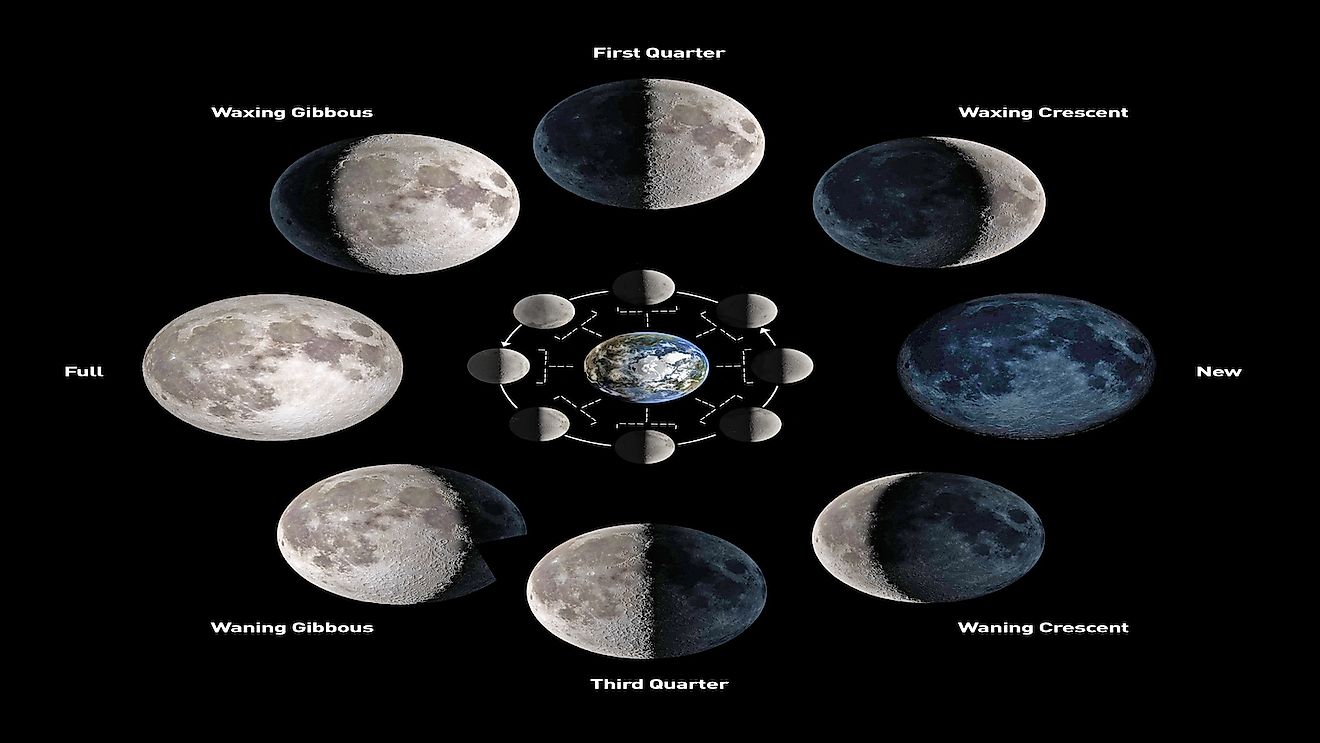What Are The Different Phases Of The Moon?

The moon is Earth's only permanent natural satellite and is usually visible at night. About 25% the size of Earth, the moon is 225,623 miles away and therefore appears relatively small. The moon is illuminated by the sun since it does not produce its own light. The appearance of the moon from Earth varies, as it sometimes appears full and brightly lit, while at other times only a small portion of the Moon is visible. These differences are explained by lunar phases, which impact the way the moon appears from Earth over approximately one month. There are eight phases of the Moon, which repeat every 29.5 days.
New Moon
A new moon is usually not visible to the naked eye, as only the unlit portion of the Moon is exposed. This phase occurs when the moon is situated directly between the sun and the Earth. A solar eclipse can only occur during this phase.
Waxing Crescent
A crescent-shaped moon appears directly after the first lunar phase. The moon’s shape resembles a crescent and increases in size each day. This lunar phase lasts until 50% of its lit surface is illuminated. "Waxing" refers to the fact that the Moon’s crescent shape is increasing in size. The waxing crescent moon becomes visible at night.
First Quarter
A first quarter moon, also referred to as a half moon, appears seven days after the lunar month begins. The right side of the Moon is visible in the Northern Hemisphere, while people living in the Southern Hemisphere see the left half.
Waxing Gibbous
The term "Gibbous" refers to the shape of the moon, which is bigger than a first-quarter moon and smaller than a full moon. The waxing-gibbous phase occurs between the half and full moon phases. During this phase, more 50% of the Moon's lit surface is visible, and its size increases daily.
Full Moon
From Earth, a full moon appears to be fully lit by the sun, meaning that the Earth is situated between the sun and moon. A full moon can even light up the night sky. A full moon occurs once a month, and a lunar eclipse can only occur during this phase.
Waning Gibbous
The waning gibbous phase is characterized by more than 50% of the lit surface of the moon being visible. During this lunar phase, the shape of the Moon becomes reduced each day. The Moon sets right after sunrise and rises in the morning during the waning gibbous phase.
Third Quarter
The seventh lunar phase occurs when more than 50% of the lit part of the moon is visible. During this phase, the moon is usually positioned at the third-quarter position, meaning it has orbited about three-quarters around the Earth.
Waning Crescent
The waning crescent phase is characterized by a crescent-shaped moon that reduces in size each day until it becomes invisible. The waning crescent moon sets in the afternoon and it rises right after midnight.











